
Exception In Java. What is an exception in java? by Deepti Swain
In Java, "Exceptions are unwanted disruptions in the normal flow of the program's execution." They signify that something went wrong during the execution of the program. Dealing with such coding errors is an integral part of every programmer's life.
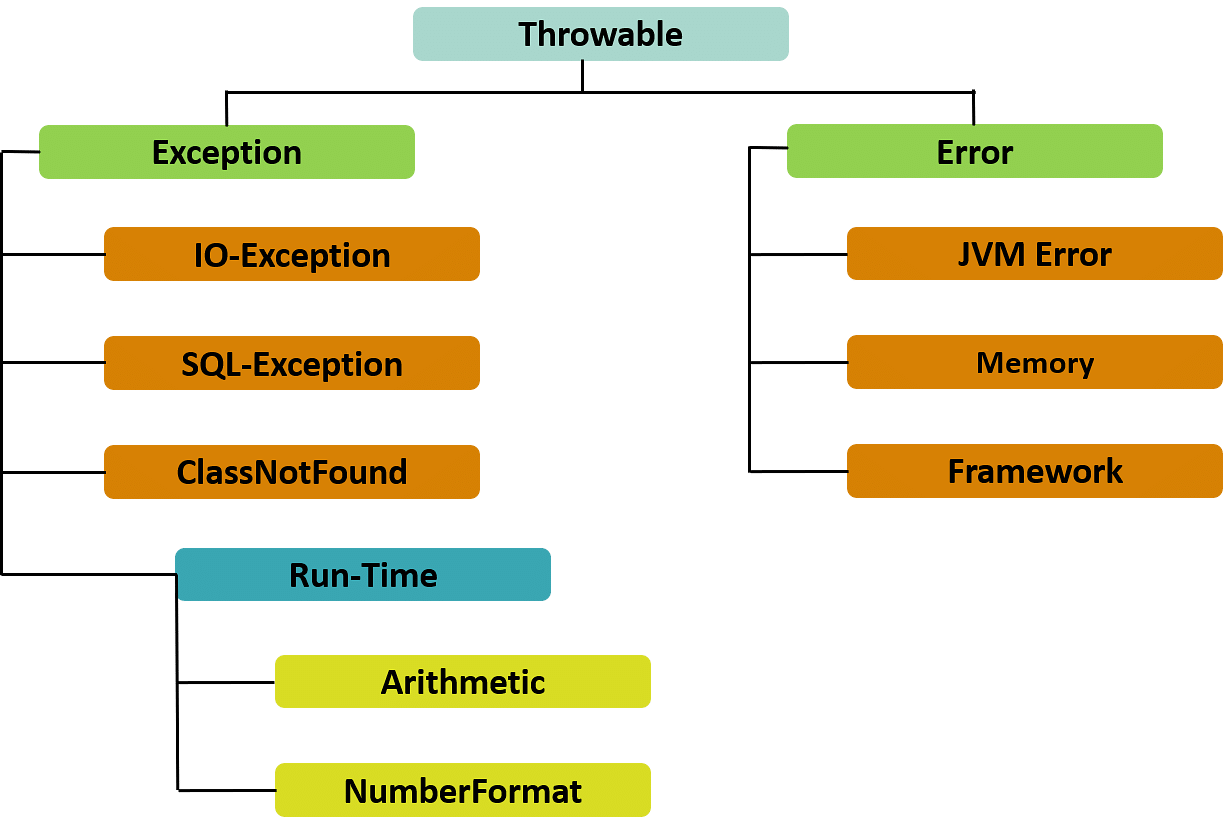
Understanding Exception Handling In Java Images
Java Exceptions Hierarchy The class at the top of the exception class hierarchy is the Throwable class, which is a direct subclass of the Object class. Throwable has two direct subclasses - Exception and Error. The diagram below shows the standard exception and error classes defined in Java, organized in the Java exceptions hierarchy:

Java Exceptions Learn Java Programming
Some don't however. Note that checked exceptions are a very debatable topic: a lot of languages don't even that concept and are doing perfectly fine without it. There are even amazingly powerful and professional Java frameworks, like Spring, that recommends to minimize the use of checked exceptions.
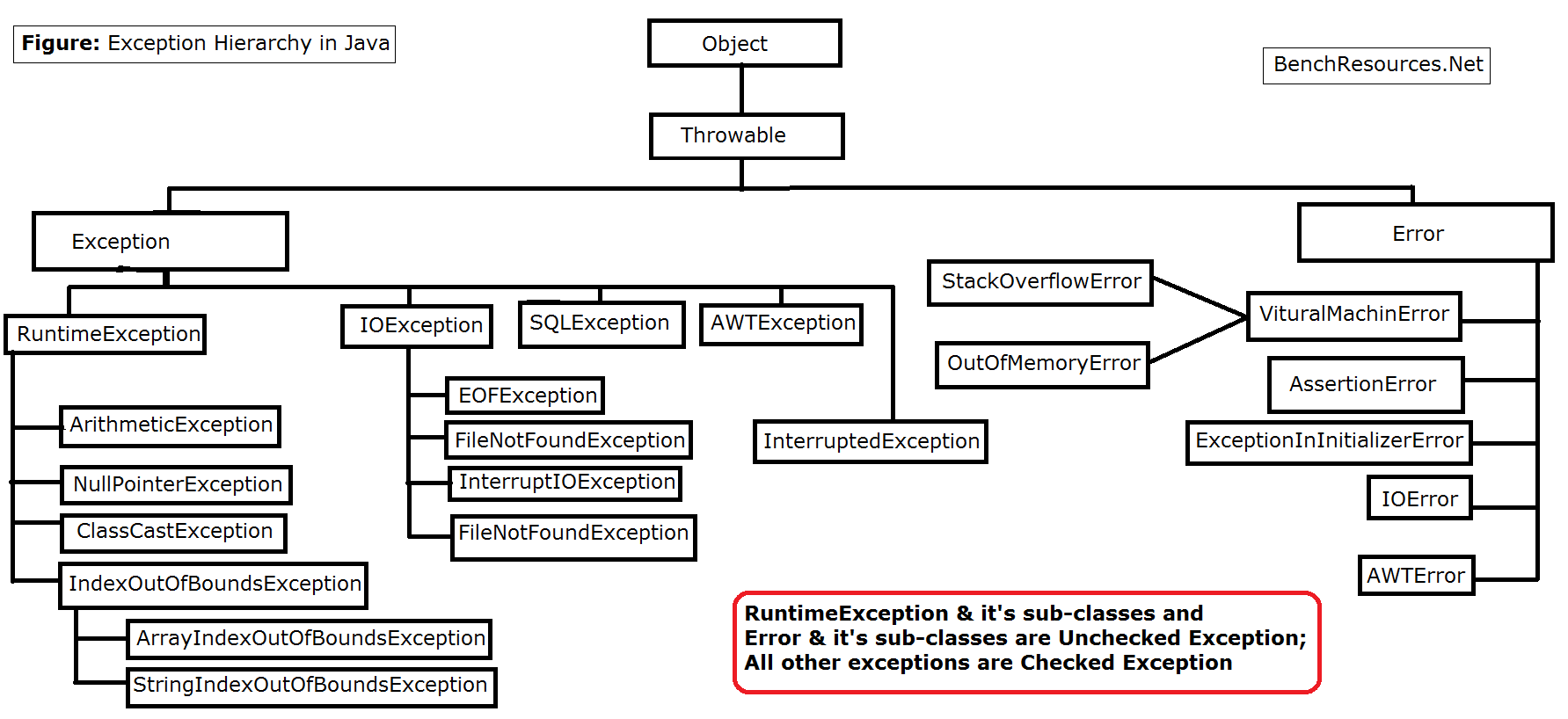
Java Exception Hierarchy
Thus for the linked list, you should roll your own exception class hierarchy. The following diagram illustrates one possible exception class hierarchy for your linked list: LinkedListException is the parent class of all the possible exceptions that can be thrown by the linked list class. Users of your linked list class can write a single.
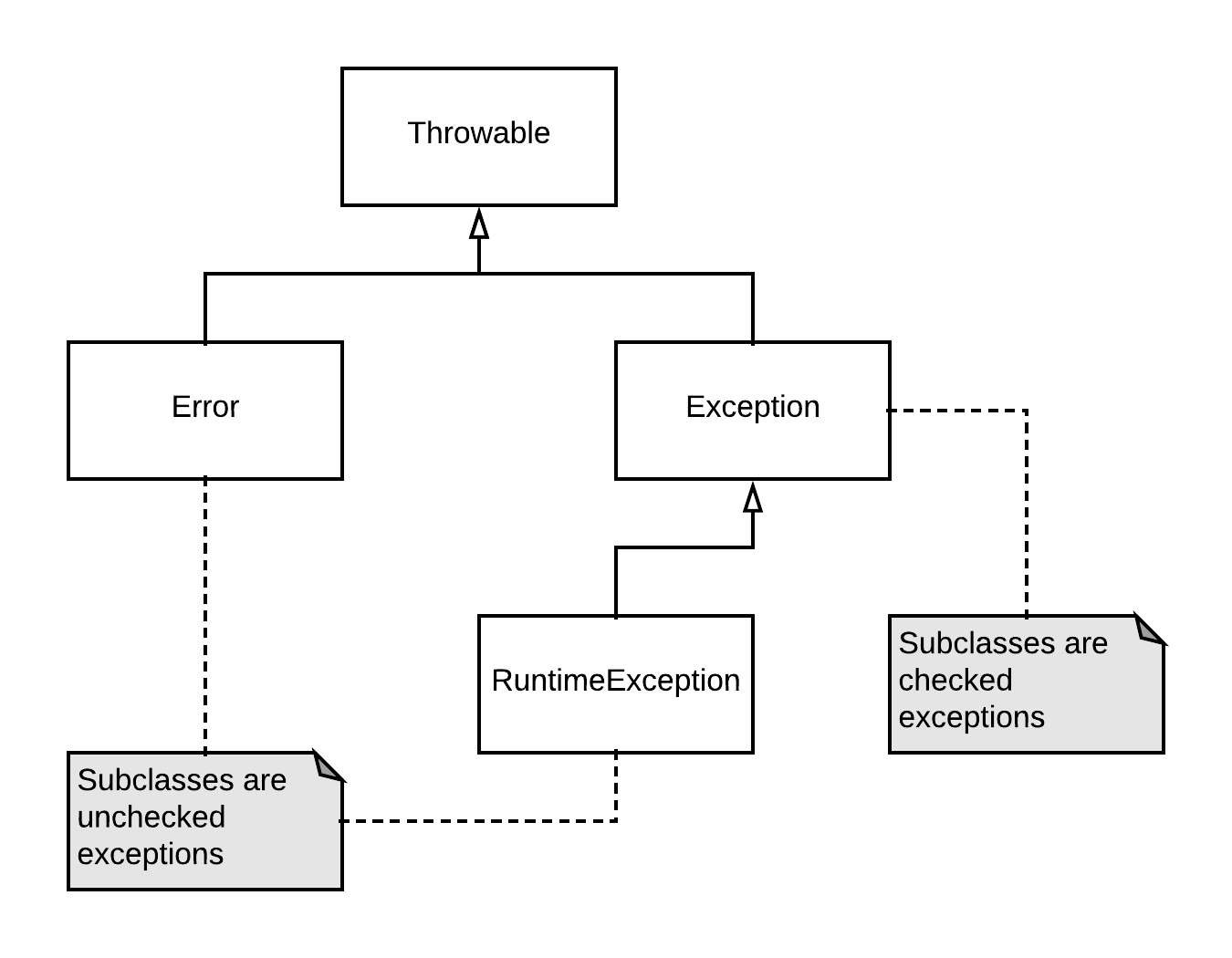
Basic Java exception handling Convinced Coder
Java Exception Hierarchy Types of Exceptions Java defines several types of exceptions that relate to its various class libraries. Java also allows users to define their own exceptions. Exceptions can be categorized in two ways: Built-in Exceptions Checked Exception Unchecked Exception
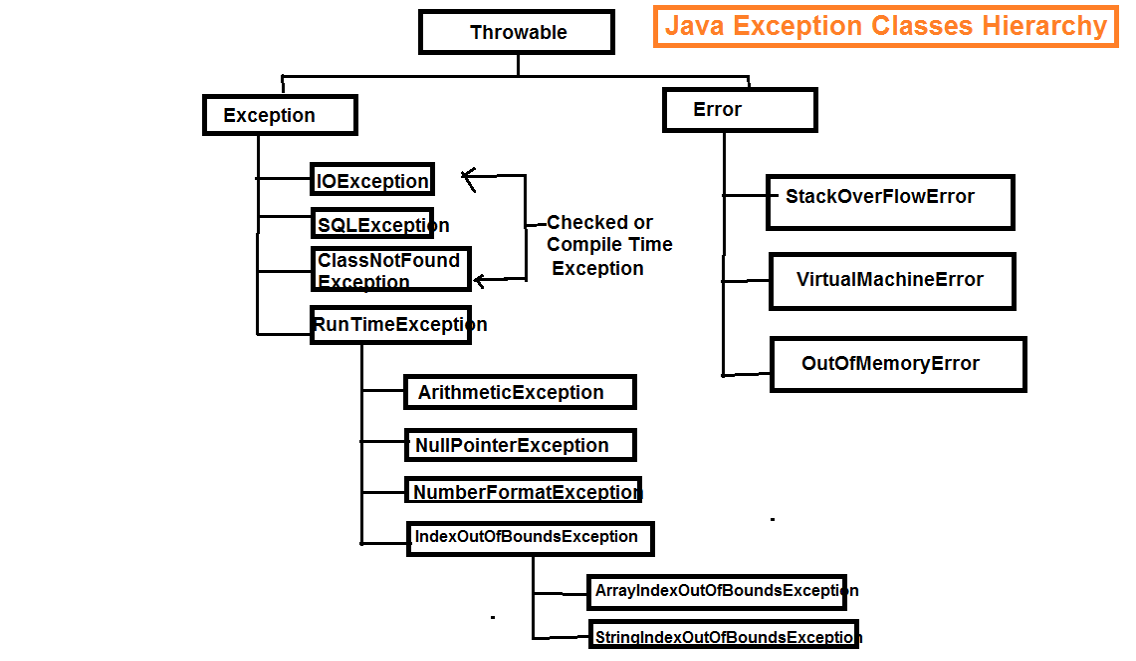
Automation Testing Insider Exception Handling in Java
java.lang.Throwable is at the root of Java's exception hierarchy. All types of exception are descendants of Throwable. java.lang.Exception is direct sub-class of Throwable. Exception is the root class for all checked exceptions in Java. java.lang.RuntimeException is direct sub-class of Exception.

Java Exception Class Hierarchy Diagram
1.Checked exceptions: These exceptions are the subclass of the Exception class. These types of exceptions occur during the compile time of the program by the javac. These exceptions can be handled by the try-catch block otherwise the program will give a compilation error.
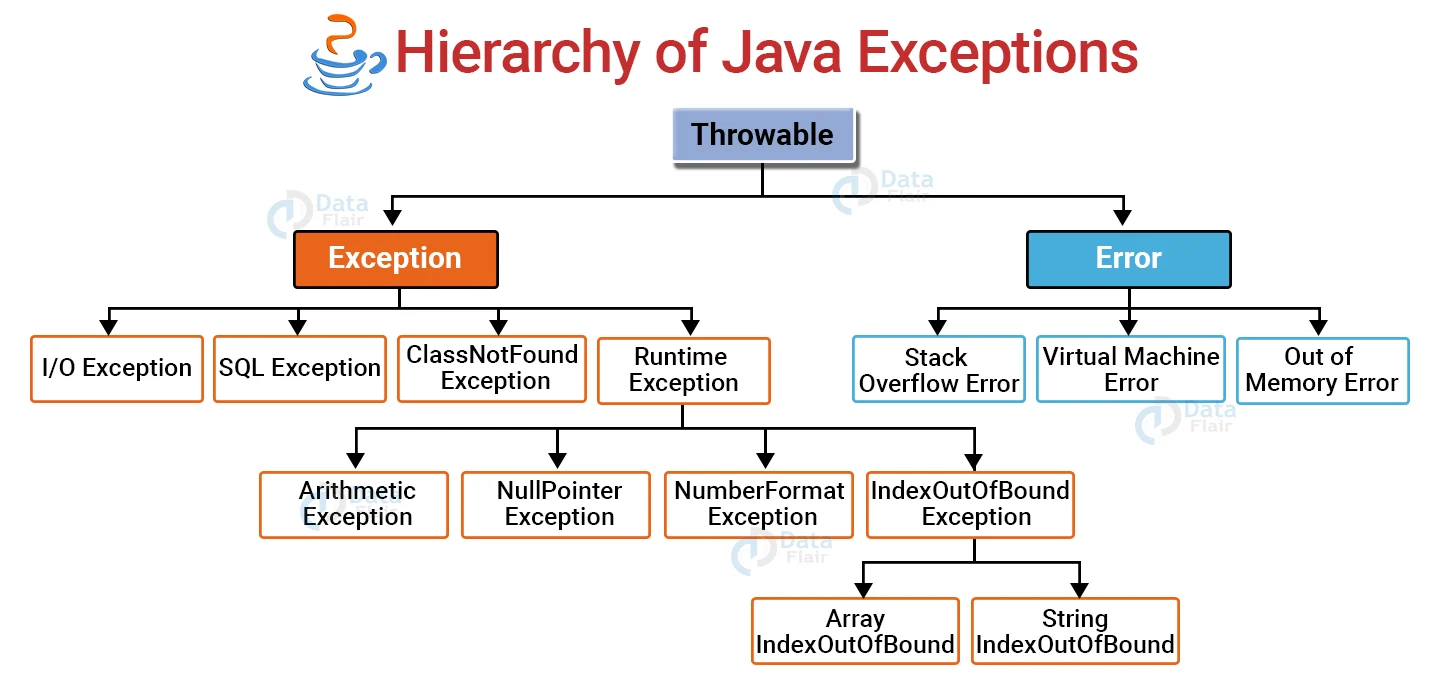
Java Exception Explore Checked & Unchecked Exception With Examples
I think your premise that unchecked exceptions are never handled is incorrect. Sure, you should never handle NullPointerException, IndexOutOfBoundsException, etc. since these indicate logic errors in the programming, and so catching them actually hides the fact that there is a bug in the program.However, some APIs have exception hierarchies that are rooted in RuntimeException and, if that is.

java Why does RuntimeException extend Exception and not the other way
An exception refers to an exceptional condition that has occurred to alter the normal flow of our programs. When an exception occurs it will get thrown by the JVM or we can determine conditions to throw an exception ourselves when required. We can catch thrown exceptions and the code we write for this purpose is known as an exception handler.

Java Exception Learn with its Types, Methods & Examples TechVidvan
In Java, exception can be checked or unchecked. They both fit into a class hierarchy. The following diagram shows Java Exception classes hierarchy. Red colored are checked exceptions. Any checked exceptions that may be thrown in a method must either be caught or declared in the method's throws clause.
Exception Handling in Java Part 1 Simple Snippets
In this tutorial, we will learn exception hierarchy in Java with diagrams and brief descriptions. In the previous tutorial, we have explained basic points of exception handling, and exception handler in Java with realtime examples. I will recommend that you first familiarize the basic points. Types of Exceptions in Java
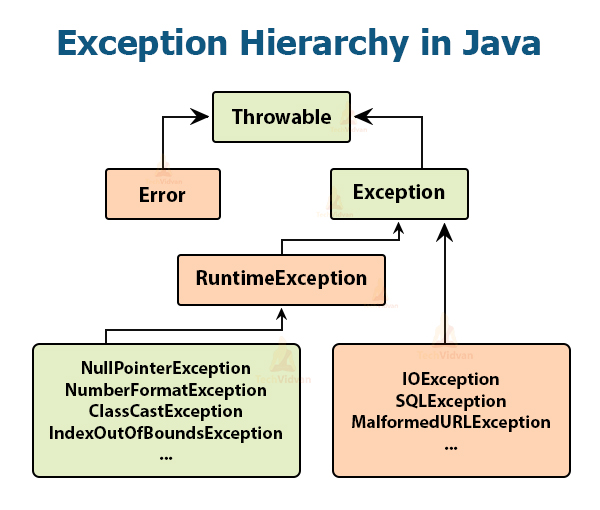
Java Exception Handling with Examples TechVidvan
5 Answers Sorted by: 33 I use this as a general rule. Where it makes sense, use a pre-defined Java exception. For example, if your code has some sort of I/O Error, it is fine to throw an IOException. Only use exception hierarchies if you need to differentiate between the two exceptions in a try/catch block.
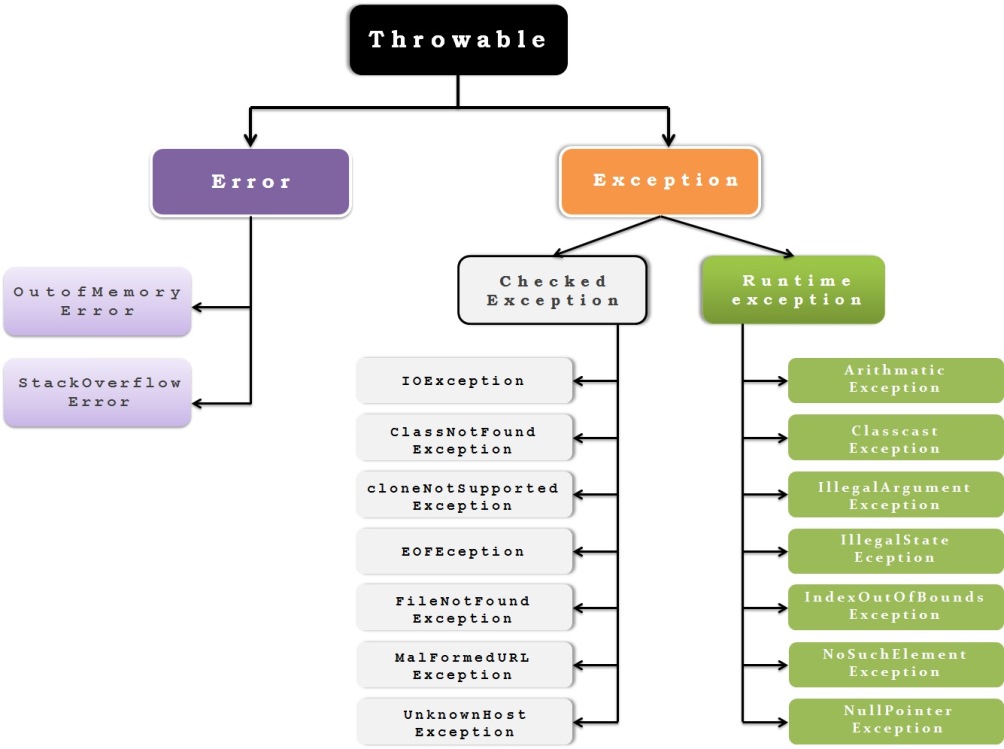
Exception Hierarchy In Java Riset
Checked and Unchecked Exceptions. Java's exception hierarchy is divided into two types of exceptions. A checked exception is one that can be analyzed by the Java compiler. Checked exceptions are thrown by methods such as the BufferedReader.readLine() method, in which there is a substantial likelihood that something might go wrong. When the compiler encounters one of these method calls, it.

Java Exception Handling Tutorial How to Handle Exceptions in Java
Exception Hierarchy Java: Java has been around the programming world for a while. Even though other languages with more advanced features have gained popularity, Java is still widely used and isn't going away anytime soon.
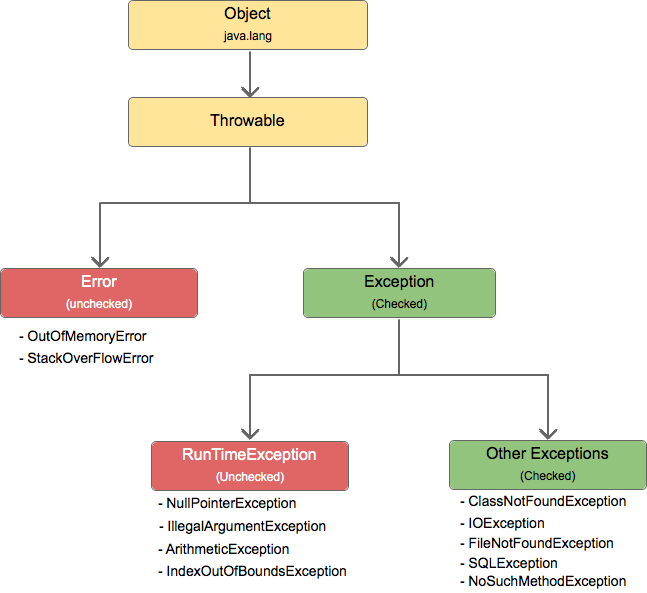
Java Exception Hierarchy Manish Sanger Manish Sanger
In Java, an exception is an event that disrupts the normal flow of the program. It is an object which is thrown at runtime. What is Exception Handling? Exception Handling is a mechanism to handle runtime errors such as ClassNotFoundException, IOException, SQLException, RemoteException, etc. Advantage of Exception Handling

Exception Handling in Java selenium webdriver Selenium Easy
The main exception hierarchy in Java. As we can see, there are three main classes that are used in order to define the application's activity after some kind of error has occurred. These are: Throwable: This is the superclass of every possible exception or error that can occur in Java.